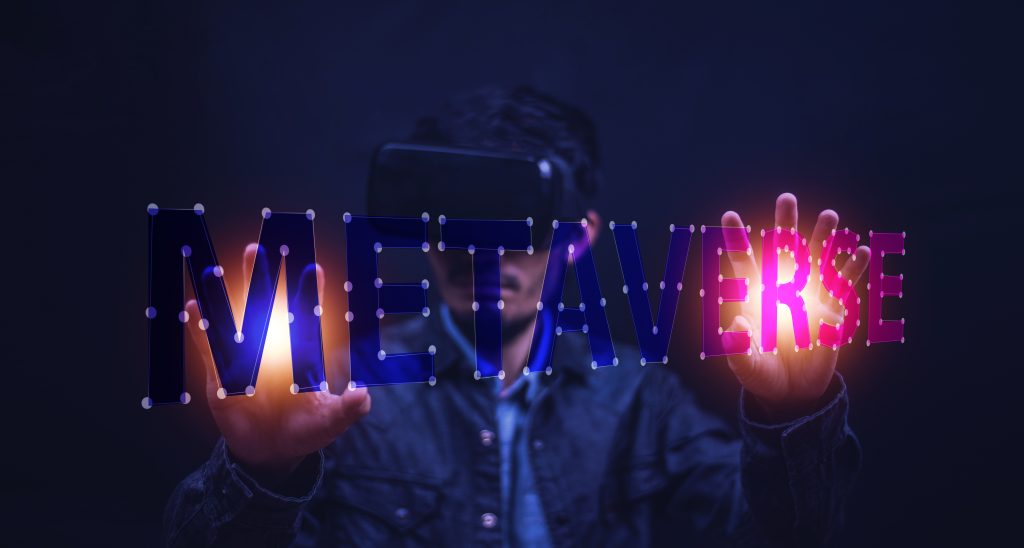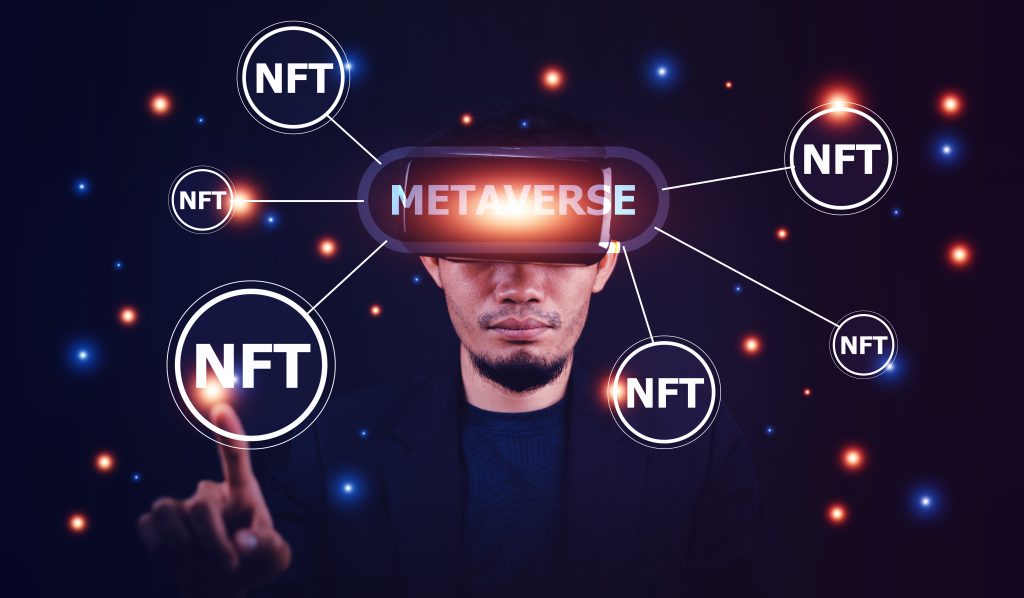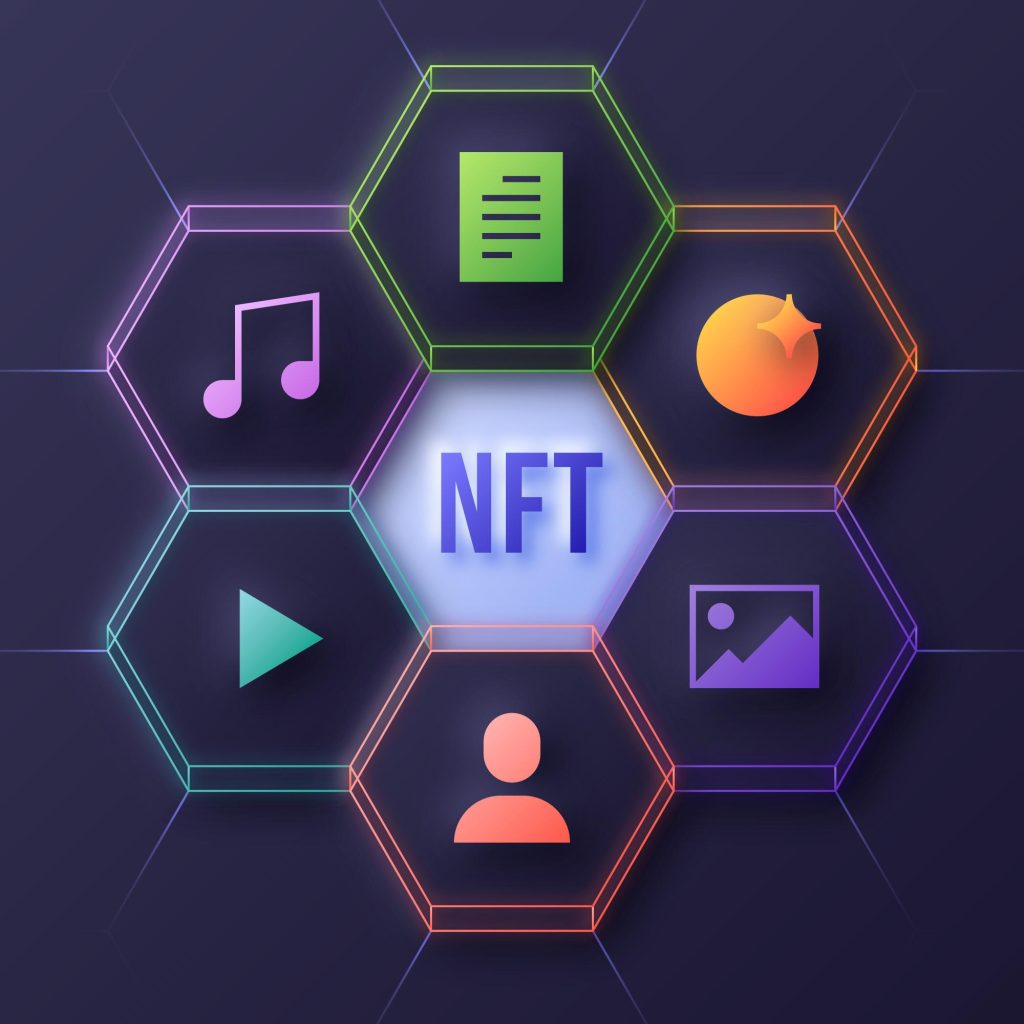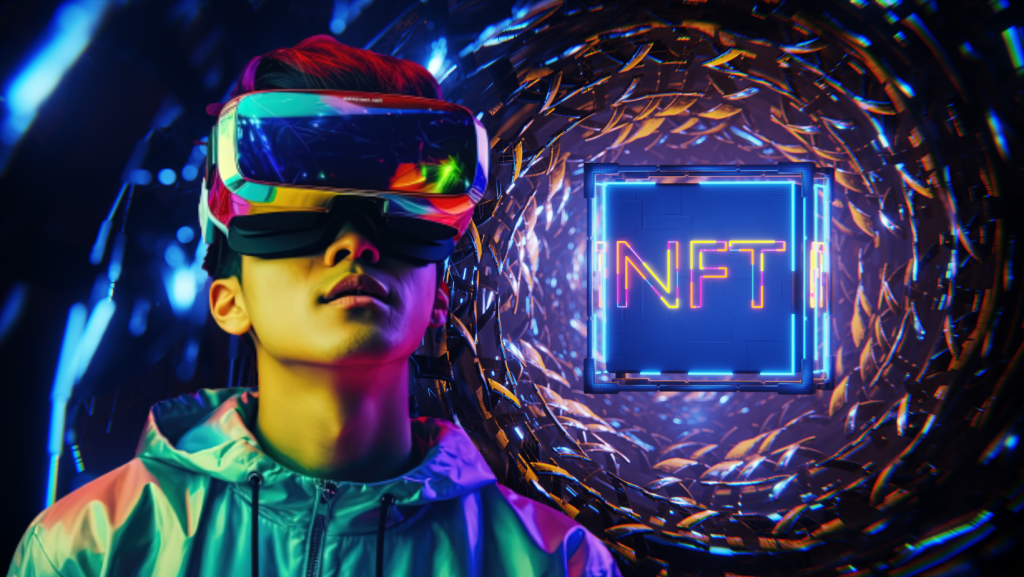The metaverse explanation begins with a vision of a virtual universe that transcends traditional digital barriers, creating an interconnected 3D internet where physical and digital realities merge. Over the years, tech giants and startups alike have embraced the metaverse concept, building the foundations for a new digital frontier. Yet, one innovation that is fueling this growth is Non-Fungible Tokens (NFTs). As the metaverse opens its doors, NFTs have emerged as the keys to a new dimension of ownership and identity within virtual worlds. This revolution not only signifies a change in the way we interact online but also brings about a cultural shift towards decentralized ownership and personalized digital experiences.
The Growing Integration of NFTs and the Metaverse


In a world where digitalization is omnipresent, the integration of NFTs and the metaverse is forging a new path for digital ownership. NFTs, unlike anything before them, have given virtual assets a tangible value. This can be seen in notable NFT sales like the $69 million purchase of Beeple’s digital artwork or the virtual real estate transactions within Decentraland.
A pivotal moment in the metaverse’s growth came when Facebook announced its rebranding to Meta, signaling a commitment to building a connected virtual universe. Meta’s vision aligns with the principles of decentralization and digital ownership facilitated by NFTs. They aim to create a space where digital assets and real-world identities seamlessly blend, and NFTs play an essential role in this plan.
Moreover, companies like Epic Games, with their Unreal Engine, are also contributing to the convergence of the metaverse and NFTs. By providing the tools to create immersive virtual environments, they enable the development of personalized spaces within the metaverse, where NFTs serve as proofs of ownership.
Furthermore, the emergence of blockchain networks like Ethereum has empowered the creation and trading of NFTs, fostering a symbiotic relationship with the metaverse. Platforms like OpenSea have become marketplaces for NFTs, integrating the concepts of virtual reality and digital ownership in unprecedented ways.
In this complex web of integration, NFTs and the metaverse are not isolated phenomena but interdependent, shaping a new era of virtual existence that goes beyond mere entertainment. From art to real estate, from social interaction to business, the fusion of NFTs and the metaverse is redefining how we perceive the virtual world, adding authenticity and value to digital experiences. This integration paves the way for a future where the boundaries between the virtual and physical blur, allowing us to live, work, and play in a unified digital universe.
Benefits of Utilizing NFTs in the Metaverse


The integration of NFTs into the metaverse brings with it a wealth of opportunities and advantages:
- Ownership and Control: NFTs provide true ownership of digital assets, allowing users to buy, sell, and trade virtual goods with the same authority as physical possessions. This creates new revenue streams for artists, gamers, and content creators.
- Personalized Experience: With NFTs, users can possess unique digital assets that reflect their identity and preferences. These tokens can be used to personalize avatars, spaces, or experiences within the metaverse.
- Monetization and Business Opportunities: Virtual marketplaces, like OpenSea, have flourished with the advent of NFTs, offering new avenues for business. Companies and individuals can sell or auction digital art, music, or even virtual real estate.
- Enhanced Security: By leveraging blockchain technology, NFTs ensure transparency and security in transactions. This safeguards against fraud and counterfeit issues that have long plagued the digital domain.
- Cross-Platform Utility: NFTs in the metaverse enable interoperability, allowing users to carry their assets across various virtual worlds. This fosters a connected and unified experience that transcends individual platforms.
Challenges and Ethical Considerations
Despite the promising benefits, the integration of NFTs into the metaverse also presents challenges and ethical considerations:
- Environmental Impact: The energy consumption of blockchain technology, particularly Proof of Work (PoW), raises environmental concerns. Efforts to minimize this impact must be prioritized.
- Intellectual Property Rights: Ensuring that creators retain their intellectual property rights in the digital realm can be complex, requiring robust legal frameworks and enforcement mechanisms.
- Accessibility and Inclusivity: The cost and complexity of acquiring NFTs might exclude certain demographics, raising questions about fairness and equality within the virtual world.
- Security and Privacy: Although blockchain adds security, potential vulnerabilities in smart contracts or platforms could lead to significant losses or privacy breaches.
Practical Applications and Real-World Examples


The convergence of NFTs and the metaverse has already manifested in exciting ways:
- Virtual Real Estate: Platforms like Decentraland and Somnium Space enable users to buy and sell virtual land as NFTs, offering ownership and control over virtual spaces.
- Digital Art Galleries: Renowned artists are hosting virtual exhibitions where digital art is sold as NFTs. The Museum of Crypto Art is a prominent example.
- Music and Entertainment: Musicians like 3LAU and Lindsay Lohan have embraced NFTs to sell music and merchandise directly to fans within virtual venues.
- Gaming and Collectibles: Games like Dragonary incorporate NFTs for in-game assets, allowing players to truly own and trade their Eggs and Dragons, skins, items, and land (islands). This is essential for taking part in game-related activities.
- Brand Engagement: Major brands like Nike and Louis Vuitton are exploring NFTs to create exclusive virtual products, bridging the gap between fashion and virtual identity.
Through these diverse applications, NFTs are not just a fleeting trend but a fundamental shift in how we interact, transact, and engage with digital worlds. The interplay between benefits and challenges paints a nuanced picture of an evolving landscape, promising innovation and growth while urging careful consideration of ethical implications. The fusion of NFTs and the metaverse is forging a path towards a more personalized, secure, and inclusive digital future, redefining our virtual experiences in profound ways.
Future Prospects


The integration of NFTs into the metaverse is a dynamic and ever-evolving narrative, setting the stage for exciting future prospects. As technology advances, the symbiotic relationship between NFTs and the metaverse continues to deepen. We’re witnessing a shift towards a decentralized, open-source metaverse, where ownership, creativity, and collaboration are central. Major corporations are investing heavily in this space, solidifying its importance in both business and consumer landscapes.
Emerging trends like augmented reality (AR) and virtual reality (VR) will further enhance the experience, creating immersive and tactile environments where NFTs play a crucial role. Innovations in blockchain technology will likely address existing challenges, such as environmental impact and security, allowing for a more sustainable and robust ecosystem.
Lastly, the adoption of NFTs in the metaverse is also leading to new legislation, policies, and ethical guidelines that protect users and creators alike. It fosters a space that celebrates individuality and freedom, transcending geographical boundaries and creating global communities with shared values and interests.
Why the Integration of NFTs and the Metaverse Matters
The marriage of NFTs and the metaverse is more than a technological novelty; it’s a paradigm shift that affects us all. It’s reshaping how we view ownership, interact with digital content, and connect with each other in virtual spaces. The metaverse, powered by NFTs, is democratizing creativity and offering unprecedented opportunities for revenue and engagement.
From artists to entrepreneurs, from gamers to global brands, the impact is tangible and far-reaching. It’s providing a new canvas for expression, a market for innovation, and a playground for exploration. Understanding how NFTs fit into this evolving landscape is not just a pursuit for tech enthusiasts but a necessity for anyone navigating the digital age.
As we forge ahead into this brave new virtual world, the intersection of NFTs and the metaverse stands as a testament to human ingenuity and the boundless possibilities of technology. It’s a movement that beckons us to participate, to innovate, and to envision a future where our digital lives are as rich, diverse, and meaningful as our physical ones. We, as part of this thrilling journey, are not just spectators but creators and beneficiaries of a transformative experience that resonates with our time and propels us into an inspiring future.
The exploration of the metaverse and its relationship with NFTs is not merely a trend but a fundamental shift in our digital existence. It’s an invitation to engage, contribute, and thrive in a world where the virtual and real seamlessly intertwine, enriching our lives in profound and lasting ways.









